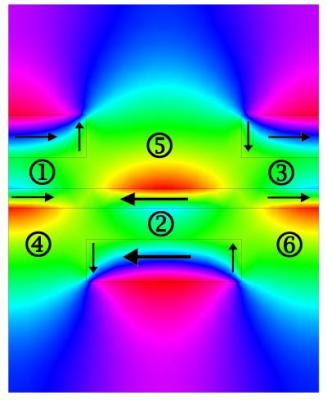Durdu Guney from the Michigan Technological University has developed a model to fabricate superlens or perfect lens that is capable of utilizing visible light to view objects measuring 100 nm.
 This is an illustration of Durdu Guney's theoretical negative-index metamaterial, which would be the heart of a perfect lens. The colors show magnetic fields generated by plasmons. The black arrows show the direction of electrical current in metallic layers, and the numbers indicate current loops that contribute to negative refraction. (Credit: Durdu Guney)
This is an illustration of Durdu Guney's theoretical negative-index metamaterial, which would be the heart of a perfect lens. The colors show magnetic fields generated by plasmons. The black arrows show the direction of electrical current in metallic layers, and the numbers indicate current loops that contribute to negative refraction. (Credit: Durdu Guney)
Metamaterials, which are artificial materials with unprecedented properties, are needed to create a superlens. Researchers are working on the production of metamaterials for realizing advanced phenomena such as superlenses, quantum levitation and invisibility cloaks. Durdu Guney’s model has demonstrated the way of stretching metamaterials in order to refract light from the infrared spectrum to the visible light spectrum and finally to the ultraviolet spectrum.
Durdu Guney’s model demonstrates that the interaction of charge oscillations called plasmons in the vicinity of the surface of the thin metal film with unique nanostructures can produce bulk negative index metamaterials in the visible spectrum with concurrently negative permeability and permittivity. When an electromagnetic field is applied to agitate the plasmons, they collect light from matter and refract it in an unusual manner termed as negative refraction. This phenomenon enables the lens to surmount the diffraction limit that restricts the use of optical lenses to see objects measuring below 200 nm.
According to Guney, the production cost of the superlenses is very low. In the lithography process, since the size of a feature to be produced depends on the lens, even very small features can be created at lower cost by replacing old lenses with these superlenses. With the help of these superlenses, even a red laser can be used to produce computer chips. Simple and inexpensive machines can be developed by simply altering the lens, and ultra-high-resolution microscopes can be easily built with these superlenses, he concluded.